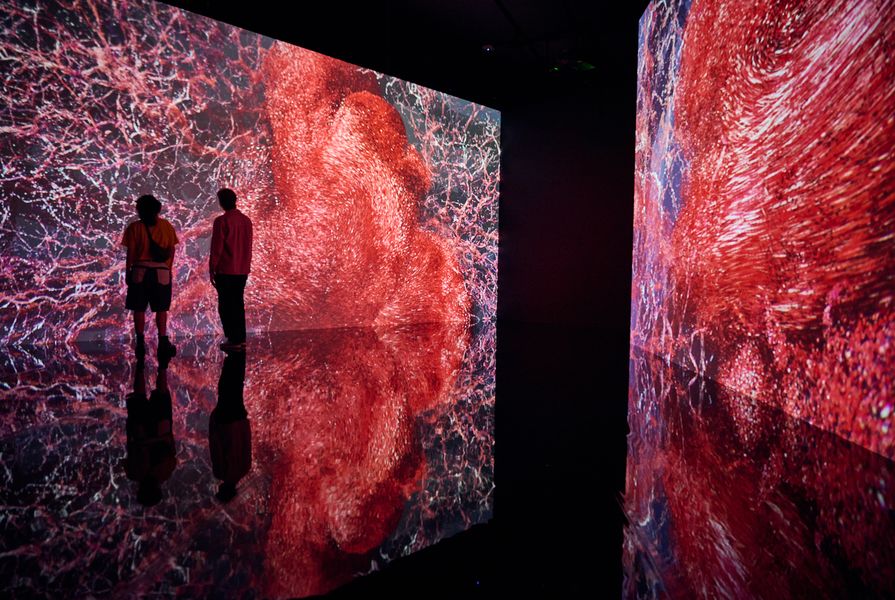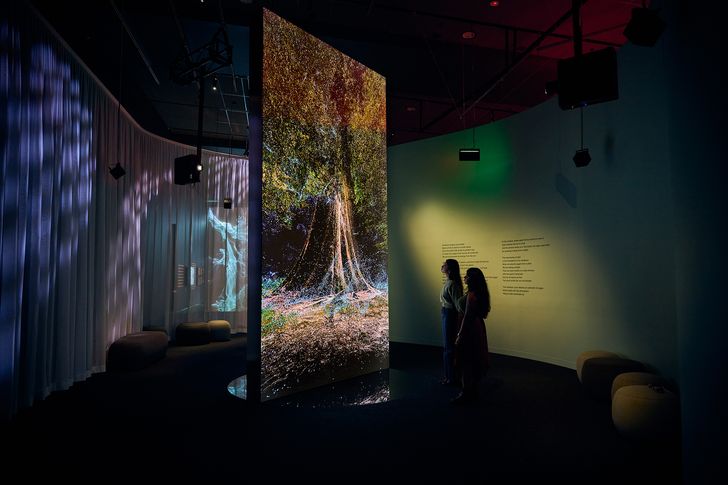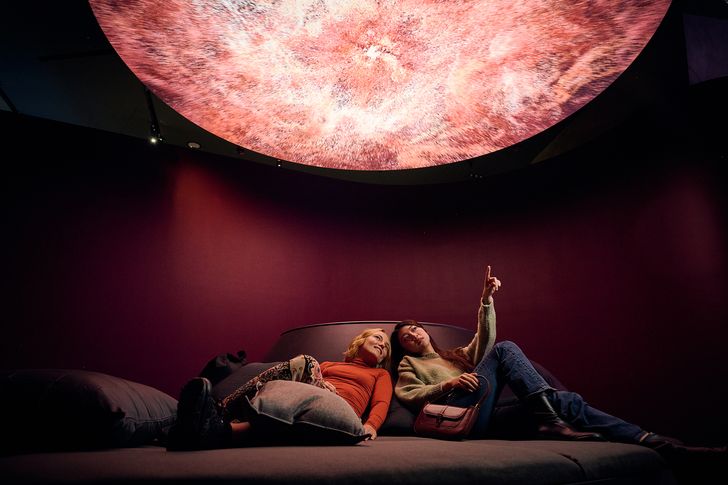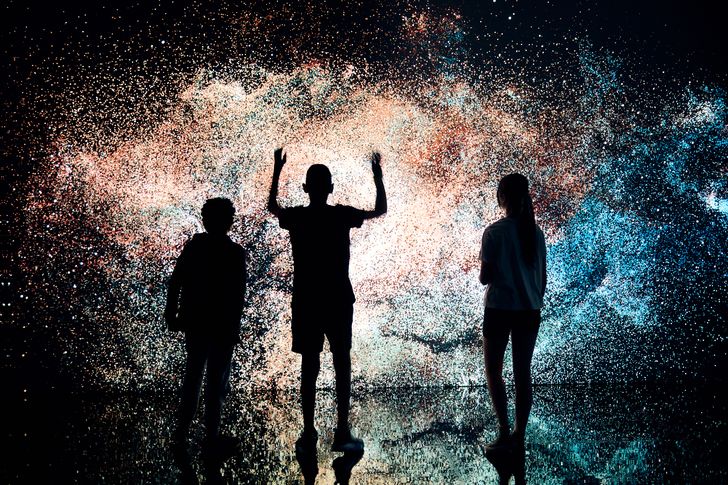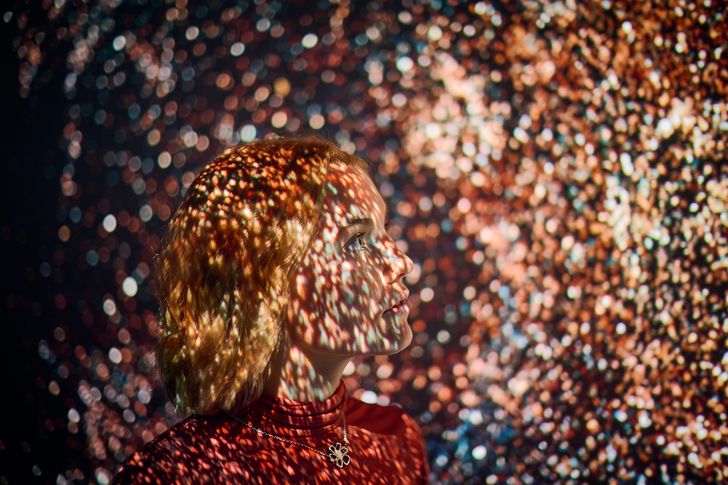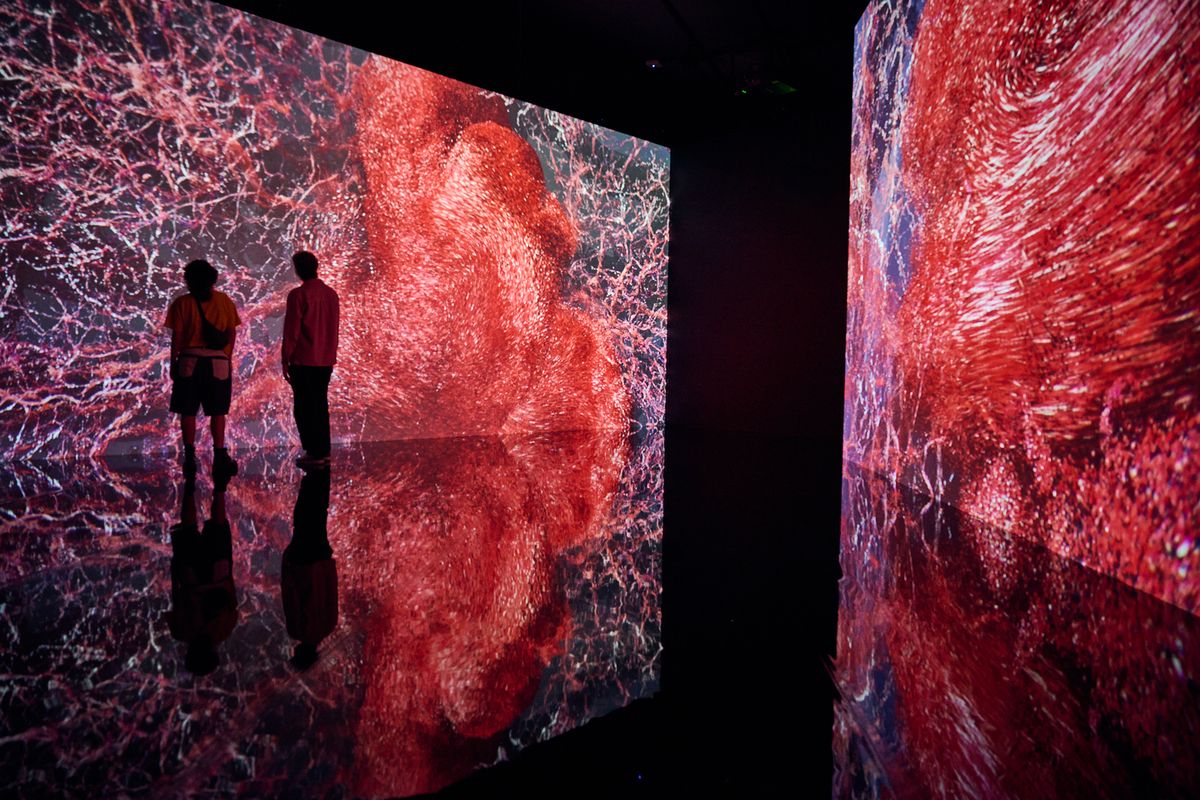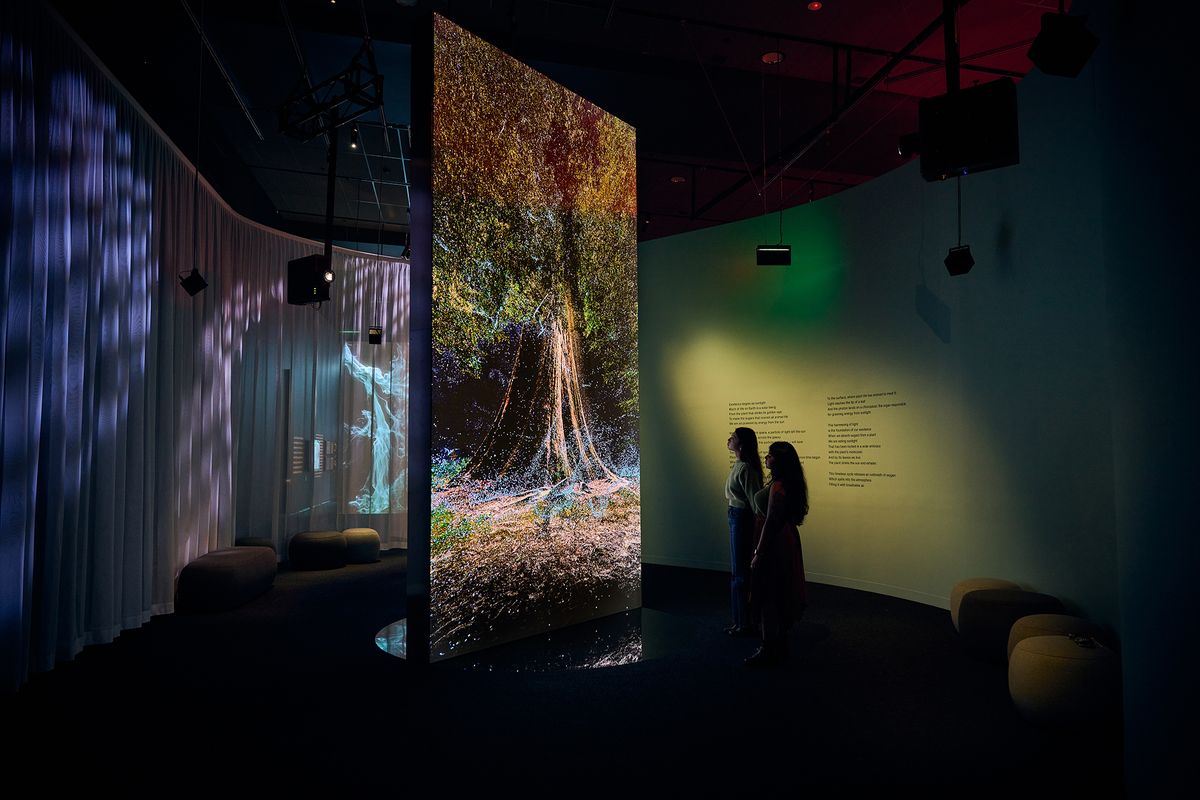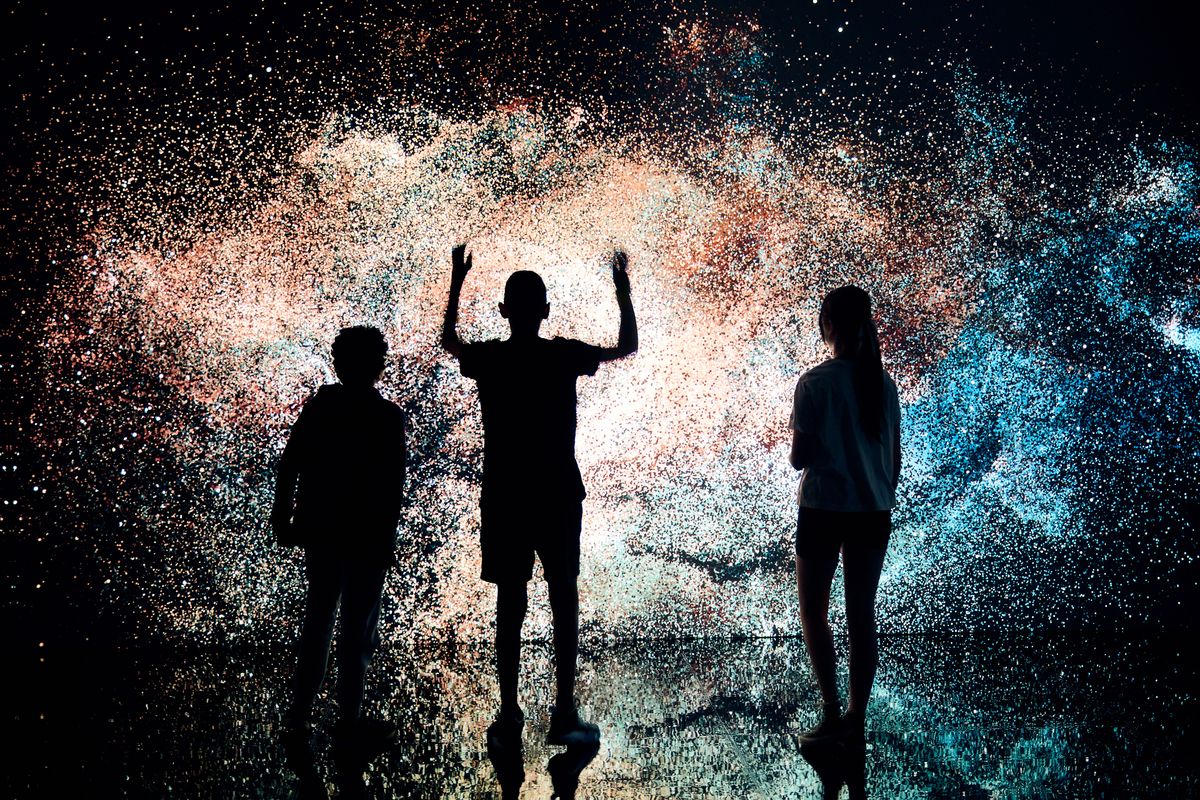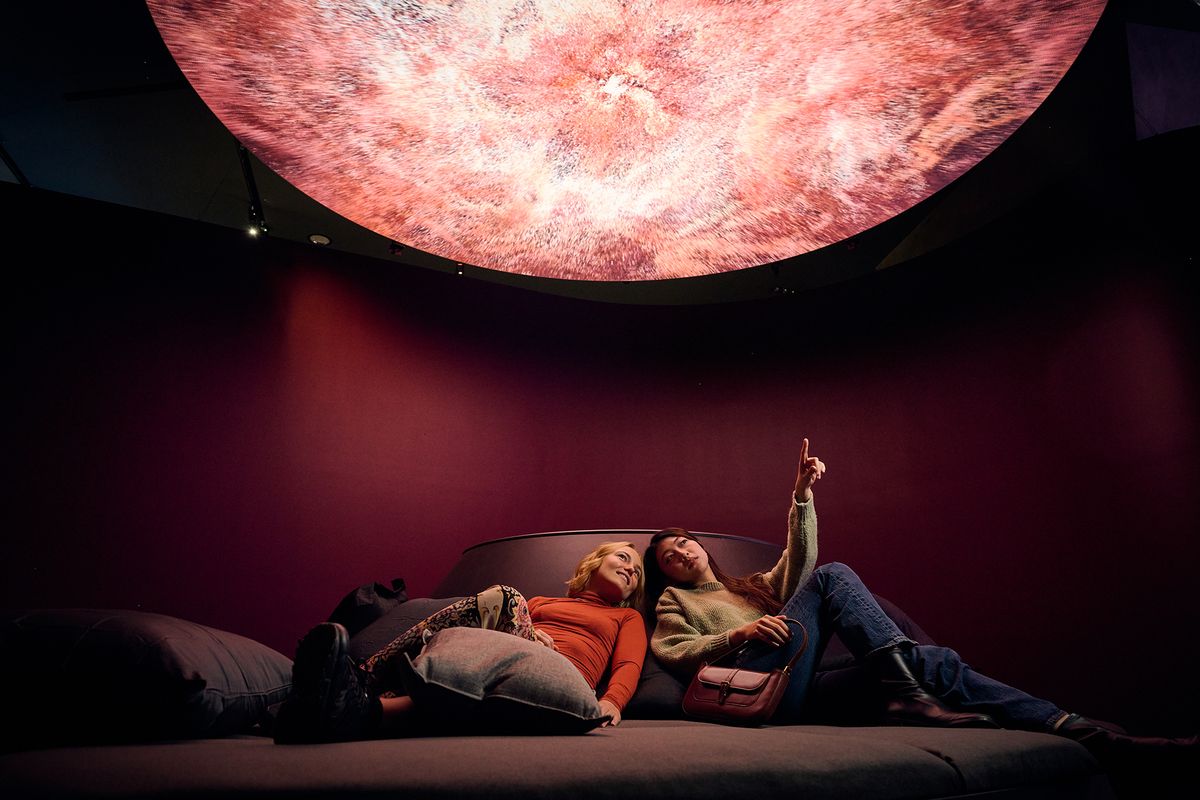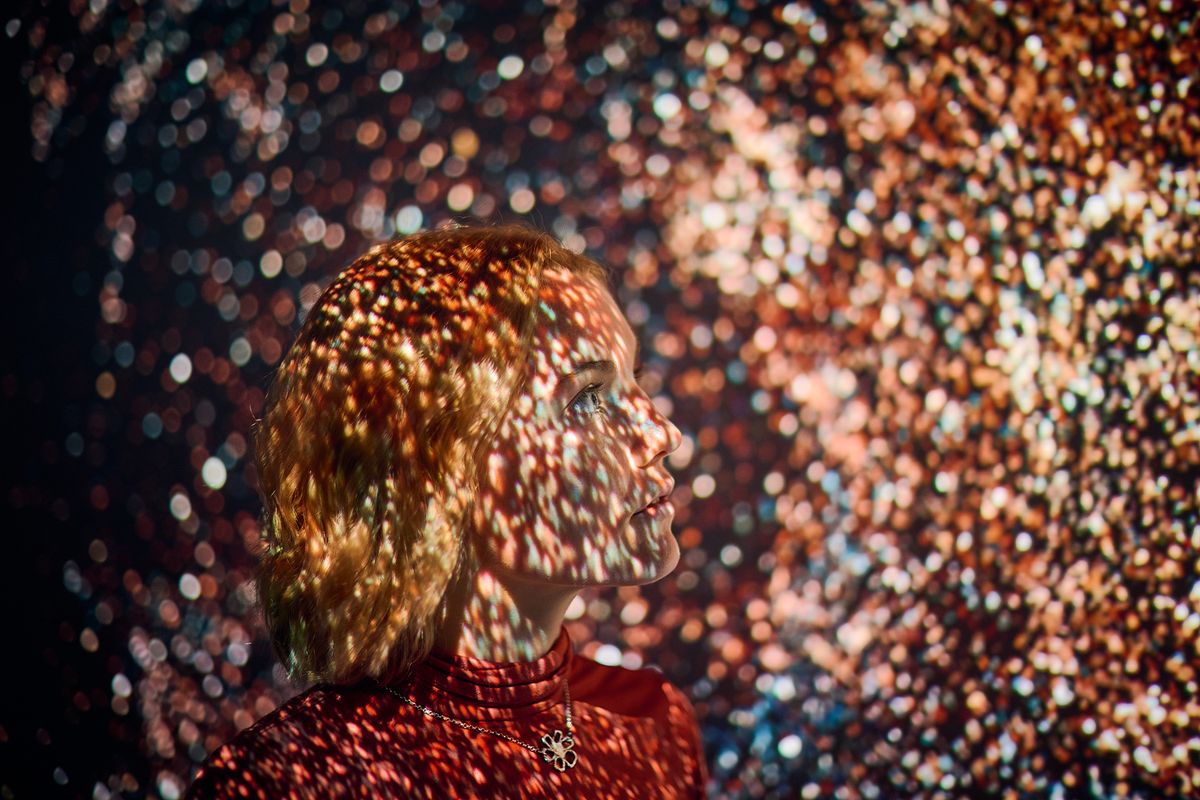Landscape architecture works with complex living ecosystems, a practice and situation which is often difficult for the general public to understand. However, recent advances in technology and innovative expressions of scientific data through immersive visual media are increasingly being used to reveal the way environments operate and to demonstrate our situation as participants in a vast network of multi-scalar universes – from the universe of our individual bodies or an individual tree, to great forest systems and beyond to the evolving cosmos. As the planet teeters on the edge of a mass extinction (some say it has already begun), finding ways to understand and appreciate our entangled ecological existence is becoming a necessity.
This is the ambition behind the immersive digital experiences created by London-based experimental art collective Marshmallow Laser Feast. Works of Nature at ACMI (the collective’s first major exhibition) uses digital technologies to create experiences that remind viewers that we are all part of a shared ecosystem. It may be of interest to landscape architects, not only as an extension of some of the approaches discussed in the most recent issue of Landscape Architecture Australia on innovation, but as a hint towards possible directions for future practice.
We Live in an Ocean of Air by Marshmallow Laser Feast, part of the Works of Nature exhibition at ACMI.
Image: Eugene Hyland
Faced with escalating climate challenges, landscape architects will hold important roles in servicing complex more-than-human ecologies. As landscapes are increasingly designed to provide nonhuman species and entities with the space they need to regenerate and repair, human expectations of how we use and experience landscapes will need to change radically. Working in this area, US-based landscape architect Kate Orff notes that landscape architects will need to “find new ways of seeing and sharing information that can communicate and share a common purpose”1. As rapid changes make ensuring broad community buy-in for regenerative projects increasingly essential, developing innovative and accessible modes for communicating and understanding these complex interconnected systems will become more important than ever.
The technologies and approaches used by Marshmallow Laser Feast could prove beneficial as we grapple with ways to communicate our complex connections. The Works of Nature exhibition uses a series of large-scale projection works to illuminate our place in this interconnected world, showing how our own breathing bodies are entangled with the pulsating rhythm of forest ecosystems, how we exchange carbon dioxide for oxygen with each breath. The large (at times, interactive) projections flank walls and ceilings, taking viewers on a journey through animated representations of the human lungs, into the nutrient cycles of a giant sequoia tree, and beyond to experience the formation of black holes.
Evolver by Marshmallow Laser Feast, part of the Works of Nature exhibition at ACMI.
Image: Eugene Hyland
This journey is achieved through five separate artworks and an additional virtual reality experience, and while the collection of works sounds small, the exhibition asks the viewer to slow down – even lay down – and take time to consider each work. The exhibition is certainly not one for just “dropping in” and this is ensured by a timeslot booking system. A 10-minute guided meditation, narrated by the melodic voice of Cate Blanchett, sets the tone for the journey. The animated point-cloud imagery projected into the space suggests, rather than accurately displays, the exchange of air, though the similarity in representing the human lungs, the tree and the cosmos has the unique effect of reminding us that we are all just atoms, caught in a web of exchange.
The exhibition journey concludes with an overview of how the works were created. Ecological surveys and scientific data sets (such as MRI scans) were combined with LiDAR (Light Detection and Ranging) scanning in various software programs. The result is the reconstitution of scientific data into an immersive artistic work that communicates the complexity of the ecosystem we are a part of. While animated works are not scientifically accurate, the artists note that the role of art in this context is to distil complex ideas into manageable concepts through creating tangible experiences – which the exhibition does well.2
Distortions in Space-Time by Marshmallow Laser Feast, part of the Works of Nature exhibition at ACMI.
Image: Eugene Hyland
Distortions in Space-Time by Marshmallow Laser Feast, part of the Works of Nature exhibition at ACMI.
Image: Eugene Hyland
This is certainly not the first time these technologies have been used to communicate confronting realities or connect people with hidden or fragile places in need of care. The documentary The Giants (2022) that details the life of Australian environmentalist Bob Brown, for example, uses a similar combination of LiDAR and animation to highlight the complexity of old growth forests. Another example is London-based research group Forensic Architecture who develops animations from satellite data and remote sensing to reveal the ongoing patterns of deforestation that are occurring in places, including certain remote areas of the Amazon rainforest.
The overwhelming public interest in this exhibition demonstrates the ability of this technology to engage with people. The success of these technologies in capturing the interest of the broader public seems like forerunners of what is to come. As we come to understand that lively local and global ecosystems are the real stakeholders in the health of this world we are in, finding ways to get broad community buy-in for projects that foreground species other than humans will be crucial. Using these sorts of immersive exhibitions and technologies within public communication strategies could soon become a key part of landscape architecture practice. 3
Works of Nature is on show at ACMI until Sunday 14 April 2024. To find out more about the exhibition and book tickets, go here.
1. Orff, Kate (2016) Towards an Urban Ecology. The Monacelli Press. p.11
2. Harris, Rob (2023) “Cry, struggle for words or simply feel alive in ACMI’s visual feast” in The Age: Art and Design (online). Accessed 14 March 2023 https://www.theage.com.au/culture/art-and-design/cry-struggle-for-words-or-simply-feel-alive-in-acmi-s-visual-feast-20231114-p5ejpt.html
3. The author thanks James Melsom and Jen Lynch for their insights while developing this article.

